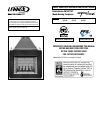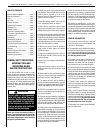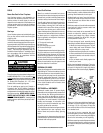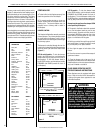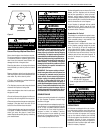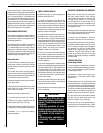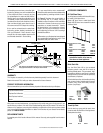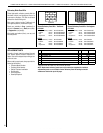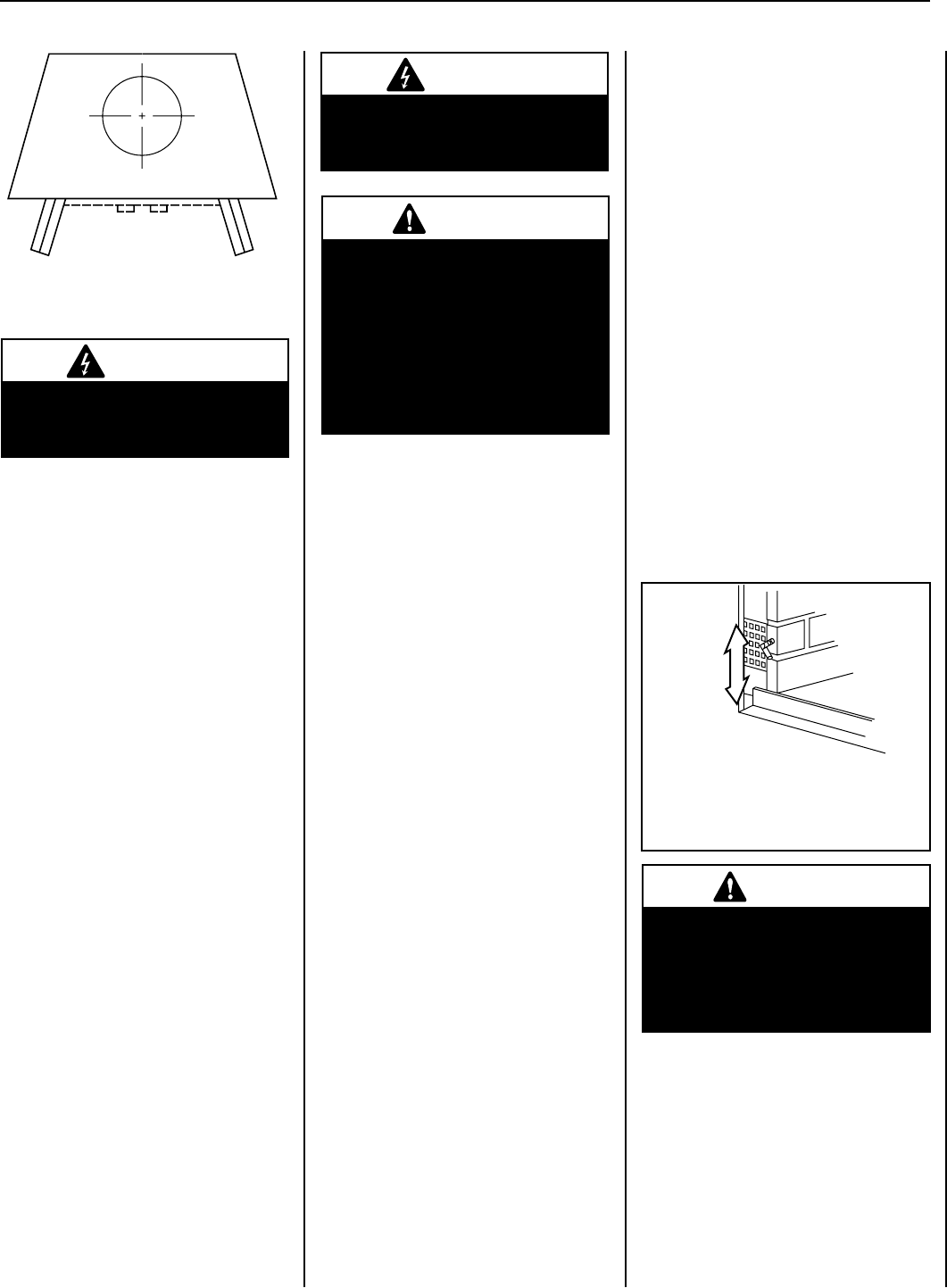
5
NOTE: DIAGRAMS & ILLUSTRATIONS ARE NOT TO SCALE.
LENNOX HEARTH PRODUCTS • ESTATE™ SERIES WOOD-BURNING FIREPLACES • MODELS EST-36/42/50 • CARE AND OPERATION INSTRUCTIONS
Figure 3
IMPORTANT: Plated polished brass glass
doors may have a plastic covering over all
brass pieces for protection during shipping
and handling. The plastic covering should be
removed before installation of the glass doors.
Under the plastic covering is a protective lac-
quer coating which should not be removed. In
some instances, if it is removed, irreversible
damage to the brass finish could occur. Refer
to the following for specific information on
plated polished brass.
IMPORTANT: The lacquer coating on the pol-
ished brass glass doors and trim pieces can
be damaged or removed causing corrosion
and/or tarnish. Do not remove the protective
lacquer coating from plated polished doors
and trim. To help protect the finish; use a
non-acidic wax and avoid the over-spray of
acidic/alkali based glass cleaners on the brass
pieces. Please understand that the heat of the
fire will cause the protective lacquer finish to
slightly change to a light caramel color. Do not
be alarmed as this is a normal occurrence.
COMBUSTION AIR
A proper amount of combustion air is important
for your replace. Fireplaces consume large
amounts of oxygen.
It is important to allow an adequate supply of air.
If the fireplace is not equipped with an outside
air kit, it may not obtain sufficient amounts
of combustion air from inside the house or
structure in which it is installed. Therefore,
the fire may draw from an outside air source
and pull air in through the chimney. This may
cause smoke spillage into the room.
Care and Cleaning of Optional Glass Doors
Never clean the glass when the doors are hot.
Do not use ammonia or ammonia based glass
or household cleaner to clean the glass or the
door frame. An ammonia based cleaner will
damage the finish of the glass door.
Clean the glass doors by wiping with a damp
towel followed by a clean dry towel to remove
streaks.
Remove stubborn stains from the glass with a
mild soap solution and a towel dampened with
clean water. Dry with a clean dry towel.
• The re must always be conned within the
boundaries of the fuel grate.
• The replace screens must always be closed
whenever the fireplace is being used.
• Never slam the glass door since it could cause
the glass to break.
• Do not build excessively large or hot res, as
scorching or discoloring of the trim may occur.
• Extreme temperature changes can cause glass
breakage. If the glass doors are cold, do not
build a hot fire and then close the doors.
• If the tempered glass pane becomes scratched
or chipped, it creates a weakness in the glass
which can cause the glass to break when
heated. Replace the pane of glass by contacting
your nearest dealer.
Fully Open or
Fully Closed
(Bi-Fold Doors)
REFRACTORIES
All fireboxes are shipped with a set of refrac-
tory brick panels (one floor, two sides, and one
back). The refractories are reinforced with steel
but can be broken by improper use. Dropping
logs on the bottom refractory and building
fires directly against the refractories can cause
premature burnout of these components.
Refractory panels may easily be repaired or
replaced at costs far below repair and mainte-
nance for masonry fireplaces.
Figure 4
Smoke spillage often occurs when a fire is first
started, until the fireplace and the chimney
has had the opportunity to “come up to tem-
perature” and to begin to function normally.
If smoke spillage problems persist, a window
may be opened just a crack to allow the proper
flow of combustion air to the fireplace.
If your fireplace is equipped with an outside
combustion air kit, keep it open at all times
when fire is burning and close when fire is out
to prevent cold air intrusion.
Combustion Air Control
The actuator for combustion air system is stan-
dard on all fireplaces but must not be operated
if the complete system is not installed. See
Figure 4 and refer to Figure 2.
The control lever is located on the lower side
of the fireplace opening behind the screen
panel. To the left for 36" and 42" models and
on the right with 50" models. If your fireplace
is equipped with the optional combustion air
kit, the control lover will move freely. If not, the
retention plate will not have been removed. To
open the air damper, turn upwards. To close,
turn down.
CAUTION
If a smoking condition exists, glass
doors should be closed during
fireplace operation.
CAUTION
Glass and metal frames get hot!
Always use handles to open and
close the doors.
WARNING
Be aware that safety glass is
unpredictable when hot and
may break, expelling hot glass
into the room. Advise all family
members to remain well away
from the fireplace when operat-
ing with doors closed to avoid
any possible personal injury.
WARNING
Do not operate the combustion
air actuator unless a complete
outside combustion air vent
system has been installed with
your fireplace.
OPEN
CLOSED
Combustion Air Control Lever
EST-36 & EST-42 shown.
(Lever on right side in EST-50 firebox.)



